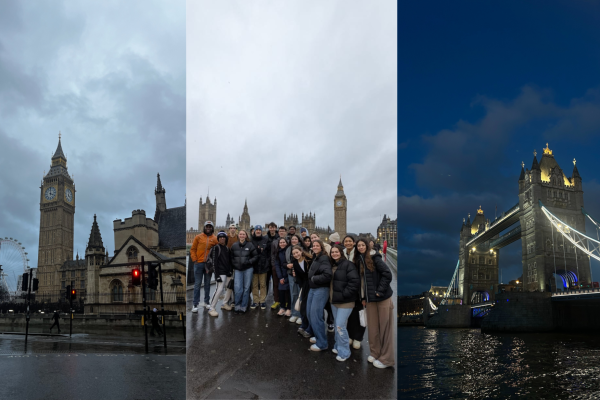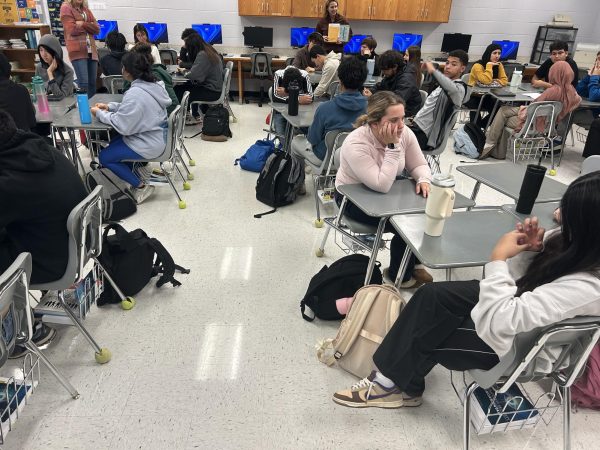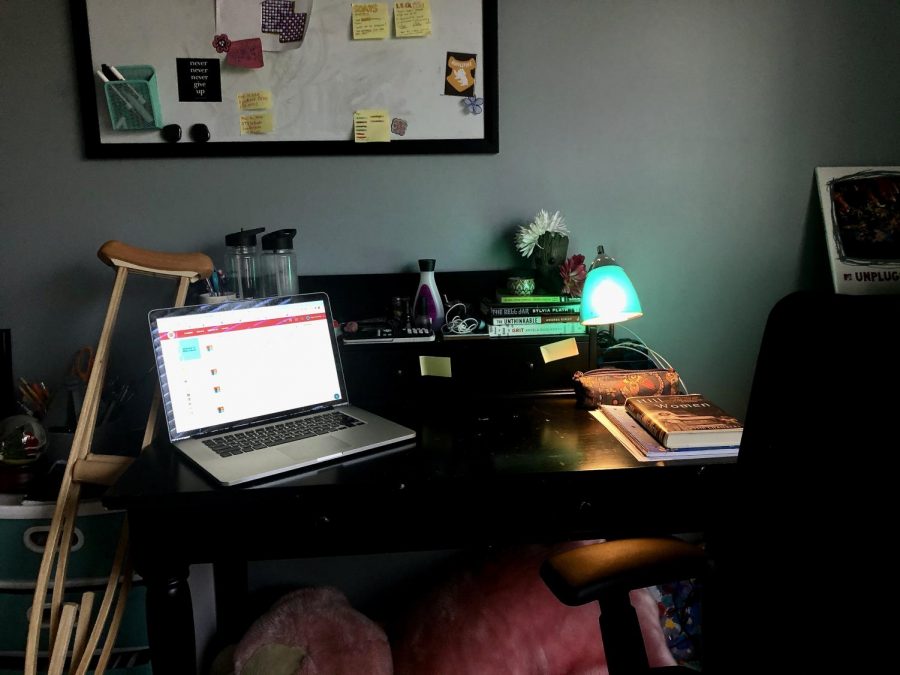Why I Chose Distance Learning
My home work space where I will continue for the rest of the year.
Ever since virtual school started September, I’ve dreamt of the day that we could finally get back in the building. Now that it’s finally here, or at least confirmed for the fast-approaching January 21st, I’ve surprisingly elected for what now seems to be the lesser of two evils: 100% distance learning. Is it just me, or does this option seem a lot more appealing than it used to?
First of all, there’s the most obvious concern of liability to get yourself and your family at home sick. I can just imagine walking through the front doors of the school to find, despite being only partially-filled, hallways teeming with students that are more-or-less a threat to my wellbeing— no matter the precautions taken. There will be understandable mistakes made, especially as they figure how exactly it will work, in addition those who simply don’t follow the rules. While I’d really like to be back in school, I don’t want to risk myself and others in the process.
Even more so, there is the increase in travel rates over the past week off to consider. Due to the Thanksgiving holiday and other upcoming winter holidays, rates are certainly going to be increasing accordingly with greater spread. As of Sunday, November 29, the positive rate for Sterling alone was over 15%, which amounts to approximately 2,000 cases.
Seeing as we’ve already been breaking records for infection and hospitalization rates daily, I’d rather minimize my risk, and that of others, by staying at home as much as possible instead of surrounding myself with a large group of both susceptible and vulnerable people.
Besides the more evident health risks involved in this decision, my mind weighed heavily on the logistics of going back. Will it actually work? If you think about the typically communal nature of high school students and our especially desperate need for socialization after all this time, the possibility of exposure personally feels a lot greater with the temptation of being with others—with masks on for over seven hours at a time.
I’ve barely seen fellow students outside of school able to keep their masks on for a couple hours, whether they’re going out in public or at one another’s houses. They will eventually give up and happily rip their masks off, deciding to throw caution to the wind and resolve that “they’ve been together long enough,” as if the masks didn’t even matter to begin with.
Although I acknowledge that wearing masks is a necessary sacrifice, and they absolutely do not restrict my ability to breathe or otherwise suffocate me, I have to ask: who else gets overly frustrated with them on occasion? Especially on a long-term basis with infrequent, if any, breaks like school expectations?
In terms of this plan’s comparison to our former high school experience, I considered the social and physical restrictions a large part of my decision to stay online. While this was extremely difficult, the thought of going without talking to my friends or hanging out with them in the band room or cafeteria during lunch and before school sounded more miserable than staying home.
It occurred to me that the comforting idea I’d beheld of returning to school for the past couple of months hinged heavily on being able to actively engage with my support system: the friends that have helped me survive for the past two years.
Furthermore, while there have admittedly been some technological comprehension issues on both sides of the teacher-student spectrum, I have a hunch that the gap won’t necessarily be bridged with in-person communication. Though I do understand the allure of seeing and conversing with my teachers, for the benefit of both my comprehension and grades, I have a hunch that this won’t be the miraculous solution.
If you think about it, the increase in peer and teacher collaboration we’ve been hoping for isn’t necessarily possible with the six foot distancing requirements and lack of physical handouts and close discussion of the pre-pandemic classroom. This brings me to the conclusion of a similar environment of continual computers use and similar screen time hours—essentially distanced school, simply relocated.
As much as the difficulties of online school have plagued me for the last three months, I’d rather experience them in the close comforts of my own house, and be able to operate more independently—whether that means dictating my own whereabouts or delegating classwork and homework. The helpful presence of my parents and brother, where I’d otherwise be without counsel or consolation in school as it is now, have served me well as both limits on my stress and mental health strains to combat the pandemic and political strife of this year.
Though I don’t doubt the overall benefits of in-person lectures and activities, we seem to also forget the online students and elements of live-streaming yet to be finalized in this increasingly complex equation. How will equity be maintained for us, and consequently affect teachers’ abilities in the classroom?
Ultimately, we have to ask ourselves: should we even fear a return to school in the first place? If so, is it really worth it? Although I had a substantial desire to see and communicate with my peers and teachers once again, the fact that I had any reservations to begin with swayed me to choose the safer option. I’d rather be stuck at home.

Neena Peterson, the Co-Editor-in-Chief, is a four year reporter for DHS Press, first writing for the newspaper in 2018. They prefer to focus on pieces...






